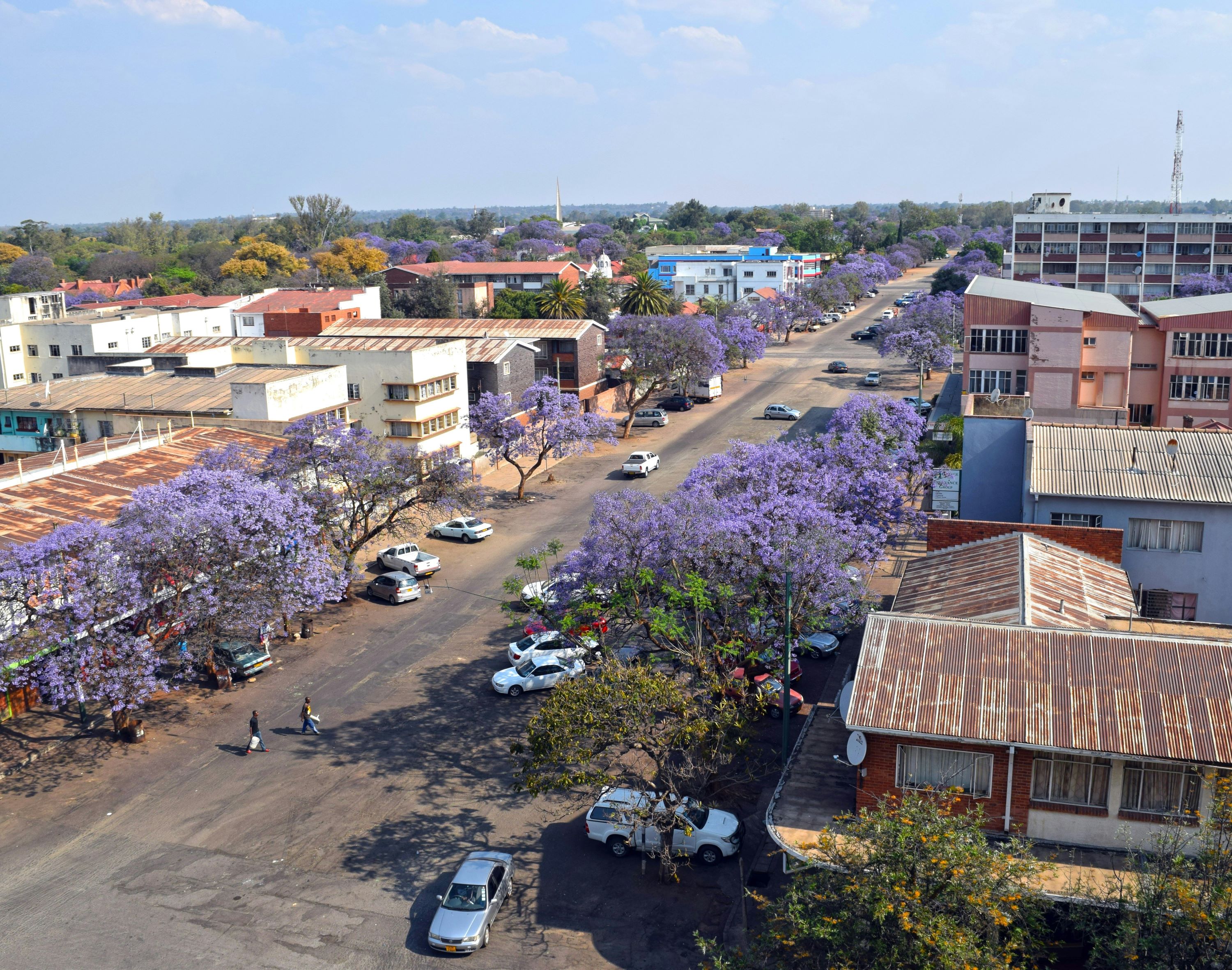



Bulawayo is a city in southwest Zimbabwe. It’s a gateway to Matobo National Park, home to the Matobo Hills rock formations and Stone Age cave art. Park wildlife includes rhinos and black eagles. Nearby, Tshabalala Game Sanctuary has zebra and impala. West of Bulawayo, the ruins of 15th-century Khami city comprise stone walls and terraces. Bulawayo’s Natural History Museum of Zimbabwe displays finds from the site. ― Google
April to August (Dry, Cool Season):
The most comfortable time — clear skies, cooler nights, great for walking and outdoor trips.
Average temperatures: 6°C (night) to 25°C (day).
September to November:
Hot and dry — ideal for game drives and wildlife spotting.
December to March (Rainy Season):
Lush landscapes but daily rain showers possible — best avoided for outdoor-heavy itineraries.
By Air:
Fly into Joshua Mqabuko Nkomo International Airport, with direct connections from Harare, Johannesburg, and sometimes Cape Town.
By Road:
Easy bus or car travel from Harare (~6 hours), Victoria Falls (~5 hours), and Beitbridge (South African border, ~4 hours).
By Train:
An overnight train runs between Harare and Bulawayo — scenic but slow and basic.
Natural History Museum of Zimbabwe:
One of Africa’s best museums, showcasing Zimbabwe’s wildlife, geology, and archaeology.
Matobo National Park (just outside the city):
A UNESCO World Heritage Site with ancient rock formations, San rock art, white rhinos, and the grave of Cecil Rhodes.
Bulawayo Railway Museum:
Fascinating collection of colonial-era locomotives and rail artifacts.
Khami Ruins:
Historical stone city ruins about 20 km west of town — a UNESCO site with spiritual and architectural significance.
Bulawayo National Gallery:
Contemporary art, sculpture, and rotating exhibitions celebrating Zimbabwean creativity.
City Architecture:
Wide avenues, colonial buildings, and Jacaranda-lined streets give Bulawayo a classic charm.
Game drives and rhino tracking in Matobo.
Explore rock art and spiritual caves used by the San people.
Walking or cycling tours of the city’s heritage sites.
Visit local markets like Mzilikazi Arts and Crafts for wood carvings and beadwork.
Attend cultural festivals or music events (often held in April and August).
Luxury:
Nesbitt Castle (historic and unique), Holiday Inn Bulawayo.
Mid-range:
Cresta Churchill, Bulawayo Rainbow Hotel.
Budget:
Parrot Lodge, guesthouses in Suburbs or Hillside areas.
Local Dishes to Try:
Sadza with beef stew or oxtail, road runner chicken, mopane worms (for the adventurous), and peanut-based vegetable dishes.
Popular Spots:
The Deck (modern café), Banff Lodge Restaurant (quiet and stylish), The Smokehouse (braai and grill), and Indaba Book Café (coffee and creative space).
Street Food:
Roasted maize, meat skewers, and fresh fruits from vendors in the city center.
Bulawayo is the heartland of Ndebele culture, with strong artistic, historical, and tribal traditions.
Locals are friendly, reserved, and deeply proud of their city’s heritage.
Art, dance, and traditional music are important — you’ll see cultural expression in schools, galleries, and public events.
English and Ndebele are widely spoken.